Inclusive disaster risk reduction means resilience for everyone
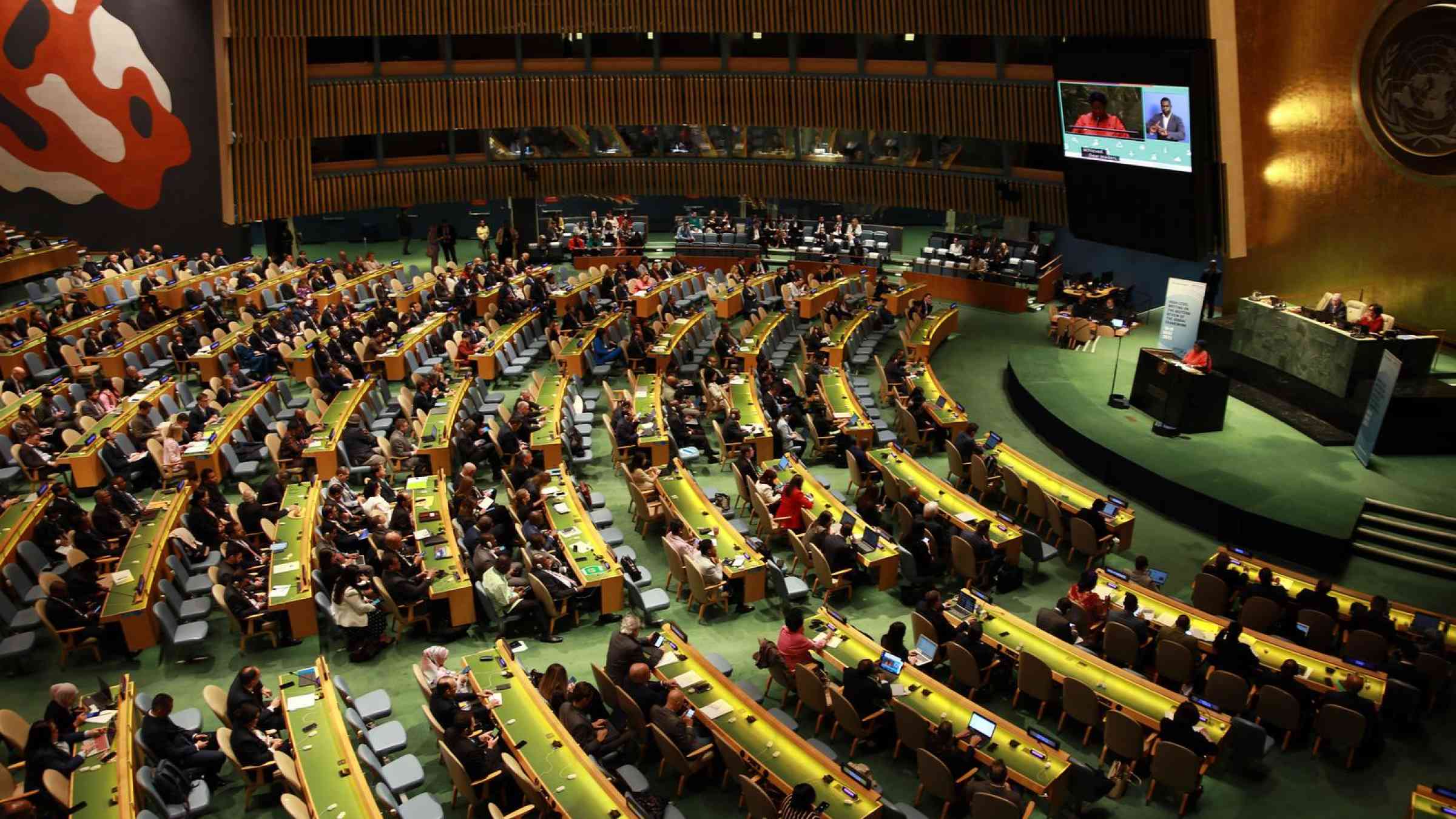
“A society that doesn’t make room for everybody, has room for nobody.” – Martine Abel-Williamson, World Blind Union
All-of-society engagement and partnership
The Midterm Review of the Sendai Framework at the United Nations in New York concluded on 19 May 2023. In the political declaration adopted at the Review, Member States agreed to promote:
“the full, equal, meaningful and inclusive participation and contribution of women, older persons, persons with disabilities, migrants, Indigenous Peoples and local communities… in all forums and processes related to disaster risk reduction and in the design and implementation of disaster risk reduction policies, plans and programmes, including for gender-responsive and disability-inclusive disaster risk reduction, in accordance with the Sendai Framework”
– Sima Sami Bahous, UN Women
Participants recognized that disaster risk reduction is everybody’s business.
To implement policies and plans successfully, all stakeholders need to be engaged, at every stage. Disasters have very real impacts at the local level, and those most at risk are often people disadvantaged through a lack of access to resources, power, and influence.
Several sessions and Risk Reduction Hub side events explored how inclusive DRR can be made a reality – these examined ‘A whole of Society Approach: the role of non-state actors in the Sendai Framework’, ‘A collective responsibility – localising disaster risk reduction’, ‘Adopting Intersectionality to DRR using Disability as an example’ and ‘Accelerating action for Gender Responsive Disaster Risk Reduction.’
These sessions had a shared focus –examining where disaster risk reduction has succeeded or failed at including the voices, knowledge, experiences, and needs of all of society.
Significant progress… but major gaps remain
The Report of the Midterm Review of the Implementation of the Sendai Framework notes that since 2015 there has been significant progress in improving inclusion in DRR, most notably in the participation of women, but there are still major gaps, and major efforts are needed to address these.
“Systematizing an all-of-society approach and strengthening inclusion in DRR will be crucial in achieving the outcome and goal of the Sendai Framework and building resilient communities,” the report urges.
IFRC Under Secretary General Xavier Castellanos, moderating the multistakeholder panel on localising disaster risk reduction, reflected that “at all levels disaster prevention measures are regularly designed without engaging the insights, wisdom and capacities of local and diverse communities. As a result, we all suffer from a less informed, less inclusive and ultimately less effective approach to reducing disaster risk.”
“Adopting a whole-of-society approach that utilizes local knowledge and capacity to agree such measures will dramatically scale up effectiveness of measures to reduce disaster risk,” he said.
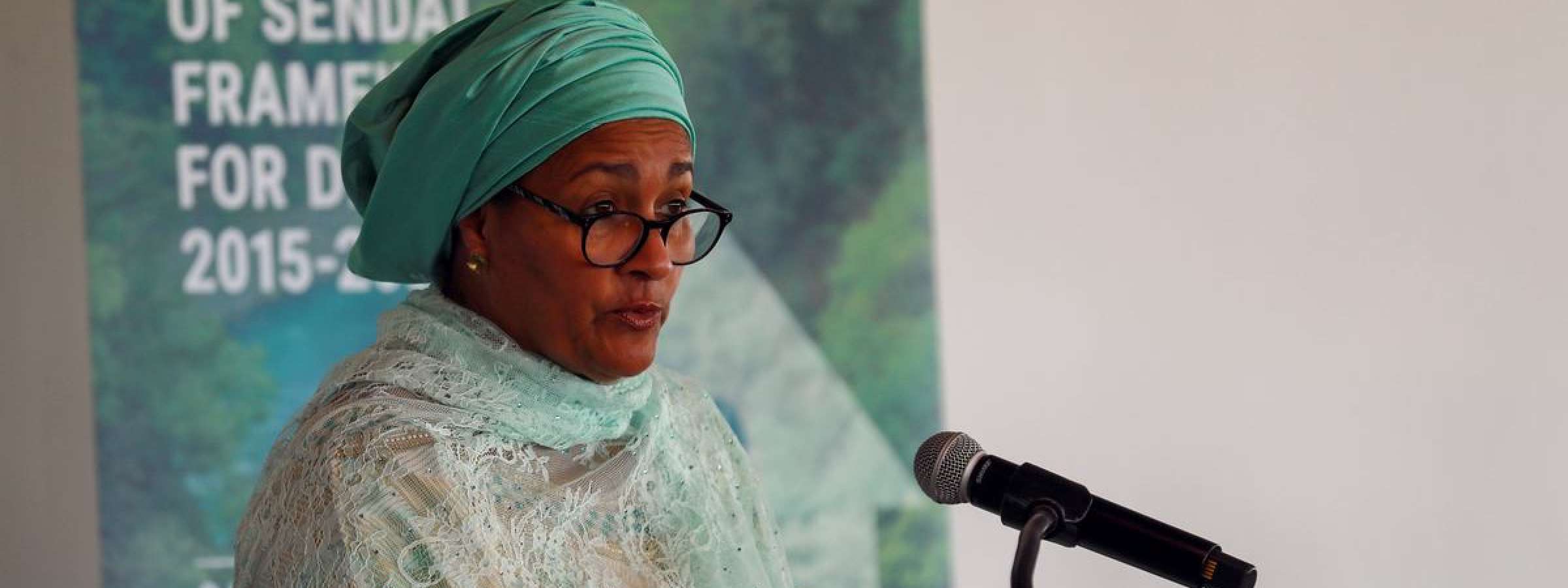
Listen to all voices
Addressing a leaders’ roundtable, UN Deputy Secretary-General Amina Mohammed reiterated that disaster risk reduction requires all-of-society engagement – which involves listening to the full spectrum of stakeholder voices.
“We need to hear the realities and experiences of different sectors, geographies, regions and country groupings,” she said. “You all have experience, knowledge and networks to contribute, to identify, innovate and test solutions and raise greater awareness.”
Panelists and speakers attested to their constituencies’ important messages, but in many cases these weren’t being heard.
“The evidence shows us that [women’s] voice, agency, and leadership is yet still undervalued, under resourced, under recognized and certainly under supported,” said Sarah Hendricks, Director of the Policy, Programme and Intergovernmental Division at UN Women.
– Marcos Concepcion Raba, GNDR
Civil society organisations give voice to non-state participants, and have a wealth of local experience and knowledge to contribute. The Global Network of Civil Society Organisations for Disaster Reduction (GNDR), a network of 1,589 organisations in 129 countries, offers an access point to these voices, and its Executive Director, Marcos Concepcion Raba, appealed to the DRR community for greater engagement:
“Work with us, work with civil society to connect with the local level, and include local voices, expertise, knowledge in all levels of risk governance,” he said.
UNDRR Director Paola Albrito, speaking at the panel on adopting intersectionality, commented that UNDRR was committed to greater inclusion in its own processes, noting that UNDRR has increased its efforts to give persons with disabilities an equal voice at its global and regional meetings. At the Global Platform for Disaster Risk Reduction in May 2022, for example, more than 200 persons with disabilities attended – doubling the number since the previous 2019 Global Platform.
“Active and meaningful participation of persons with disabilities and their representative organizations during the Sendai Framework development has been key to ensure these commitments to disability inclusion within the framework,” Ms Albrito said.
In addition to ensuring that persons with disabilities are included on the DRR agenda, inclusion means taking active steps to remove physical barriers to access to participation.
DRR is a never-ending task
Communities and individuals know their own needs and risks better than anyone, especially in those situations where their needs – and capabilities – are quite specific, such as persons with disabilities.
Kazuko Kohri, Mayor of Sendai – the Japanese city which hosted the 2015 conference at which the eponymous Framework was adopted – reflected on her city’s experience of “building back better” after the 2011 Tōhoku earthquake and tsunami.
Embracing a multistakeholder approach, including the voices of citizens, community groups, non-governmental organisations, academia and the private sector, Sendai has adopted best practices and appropriate technologies to reduce risks in the face of future hazards.
This dialogue needs to be continuous, she said, as “DRR is a never-ending task.”
- Marcie Roth, World Institute on Disability
Martine Abel-Williamson, President of the World Blind Union, remarked that in many countries around one in four or one in five people live with disabilities, and so their views and practical contributions are essential – and by no means marginal.
“Whether we are meeting about theory and policy or about practical initiatives, please include and involve disabled persons’ organisations. You don’t have to reinvent the wheel – they already have a lot of the knowledge about how to include disability-inclusive disaster risk reduction,” she said.
Ms Sharon Bhagwan-Rolls, regional representative for the Shifting the Power Coalition – which includes the Pacific Disability Forum in its membership – said that it is essential to empower women with disabilities.
“Our dedicated and intentional inclusive approach is informed by our gender and disability experts,” she said – and these experts are persons with disabilities themselves, who employ traditional knowledge and wisdom to challenge the power structures that make them vulnerable.
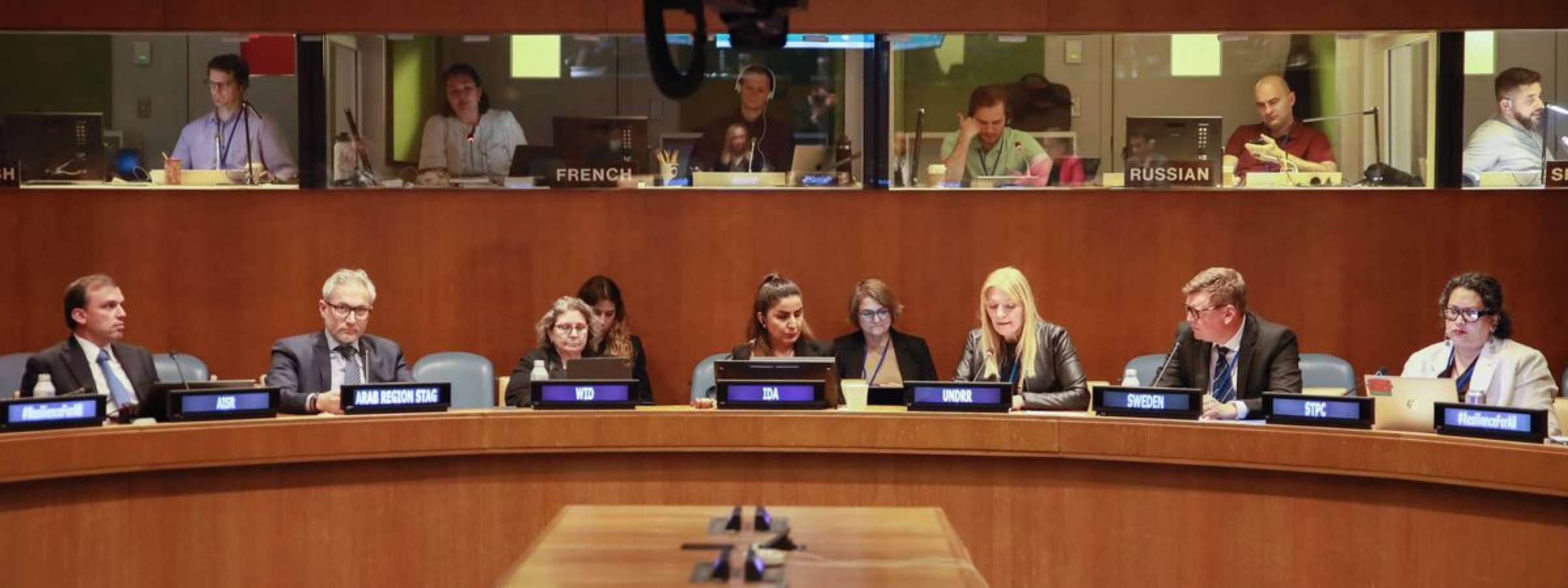
Better data for a stronger understanding
“[M]ost countries [ …] highlighted challenges around participation in data collection and risk assessment, pointing to data gaps on women, older persons, persons with disabilities, and children.” Report of the Midterm Review of the Implementation of the Sendai Framework
- Xavier Castellanos, IFRC
Inclusive policies, programmes and plans depend on data that represents all of society. Many of those who contributed to the discussions pointed to gaps in available data – but they also held up inspiring examples of initiatives to improve the inclusiveness of data collection and risk assessment.
Participants in the session on intersectionality pointed to serious data gaps about persons with disabilities – and data of poor quality where it exists – as a significant issue to be addressed. They called for great efforts to collect high quality, disaggregated data and for it be used for evidence-based decision-making.
Marcos Concepcion Raba introduced GNDR’s flagship programme, Views from the Frontline, which collects community perspectives on risk and resilience from those who are most at risk to understand underlying stresses, emerging risks, risk governance, and enabling mechanisms at a local level. To date, the programme has been implemented in more than 700 at-risk communities in more than 50 countries, surveying around 120,000 individuals.
“Views from the Frontline is recognised as being the only tool which not only assesses the risk and resilience, but provides a platform for local communities to amplify their voices at the national and global level, and thereby influence policies and practices,” Mr Raba said.
– Marcos Concepcion Raba, GNDR
Mwanahamisi Singano, spokesperson for the Women and Gender Stakeholder Group, said that data is essential to informing decisions around gender and risk reduction.
“We don’t know the magnitude of the problem because we don’t record it. Unless we put numbers, unless we put faces, unless we put names, then we aren’t able to say this is how much we are dealing with,” she said.
She applauded the guidelines on gender-disaggregated data issued in the lead up to the Midterm Review, saying that it was “instrumental in making sure that we are seeing a Midterm Review Report with a quite decent reference on gender.”
Strong evidence
Many states are making progress in collecting disaggregated data that can be used to refine the risk profiles of specific groups and communities. The Philippines recognises the importance of collecting age- and gender-disaggregated data, and has adopted a resolution based on the requirements of the Sendai Framework
“The National Economic Development Authority actually has a gender and DRR checklist for all government programmes and projects,” said Maria Antonia Yulo Loyzaga, Secretary of the country’s Department of Environment and Natural Resources.
Shawn Tupper, Deputy Minister of Public Safety Canada, outlined his country’s efforts to support equality and establish proactive planning, highlighting intersectionality as a key issue, and explained that Canada has incorporated this information into a social vulnerability index to be used in advance of disasters.
Locally owned solutions need to be based on strong evidence, said Sarah Hendricks, Director of UN Women’s Policy, Programme and Intergovernmental Division.
UN Women has developed the Women’s Resilience to Disasters (WRD) Policy Tracker to contribute to such an evidence base by following the progress of gender-responsive and inclusive frameworks across UN Member States, analysing progress across regions and countries, and highlighting good practice.
“This Policy Tracker tracks progress on the development of gender responsive and inclusive policy frameworks on DRR and on climate across all Member States and really tries to make that data available and accessible around what works, Ms Hendricks said. “Last year there were about 114 different national and regional DRR or climate policy frameworks that brought gender into the forefront in meaningful ways that were amplified through that policy tracker.”
Organise and lead
For an inclusive approach it is necessary to more than to listen to all voices, and ensure that the data used reflects all of society. Inclusive disaster risk reduction requires inclusive leadership.
Martine Abel-Williamson argued that persons with disabilities have often developed unique skills and resilience to meet the challenges of daily life that equip them to lead in disaster situations.
“If we are totally inclusive and accessible, disabled people will not just survive through a disaster, but will be able to be agents of change,” she said.
Sima Sami Bahous, Executive Director of UN Women, said that women likewise step into leadership roles when facing adversity.
“Women lift their families and communities after droughts. They lift them after floods, after hurricanes. They lift them back to stability once again,” she said.
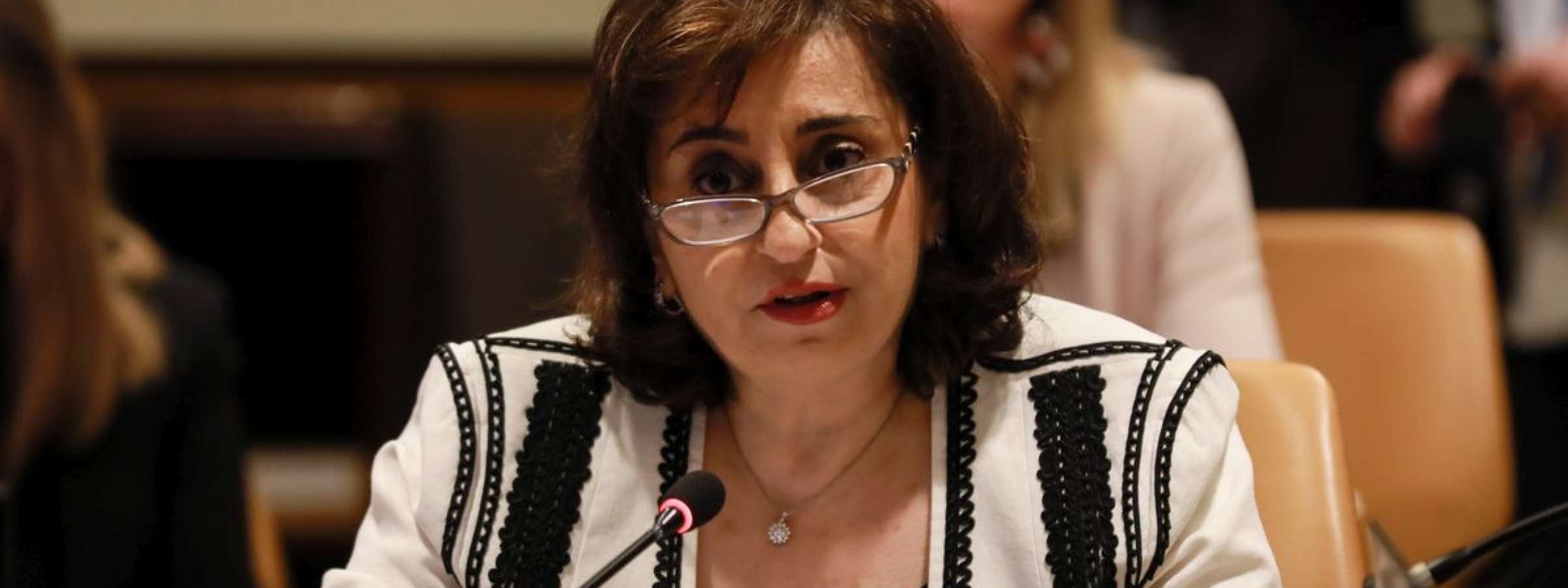
“When crises converge, women step up”
Bernice Van Bronkhorst, Global Director for Urban, Resilience and Land Global Practice at the World Bank, echoed this sentiment:
“When crises converge – as we have seen in the pacific and in the Lake Chad Basin region – women step up, especially when they have access to knowledge, finance and political urgency,” she said.
– Sarah Hendricks, UN Women
Empowering women means granting them agency to control their own lives, and the World Bank has put in place interventions to ensure women have legal access to their own property.
“If you don’t have title to your property, it is very difficult to prove after a disaster that you actually owned that piece of land, that that was yours, that house belonged to you,” Ms Van Bronkhorst said. “We need to really make sure that women have formal title and that they can access financing through formal bank loans. Unless you can prove that you have that collateral, it is very difficult for women.”
Women need to be given agency to realise “the solutions that they know work,” said Sarah Hendricks.
Sharon Bhagwan-Rolls called for greater political will and resources to include persons with disabilities – and in particular women with disability – which would benefit all of society.
“It’s not just about making do with what you get, but […] scaling up the resources for gender equality and disability rights,” she said.
“Across the Pacific region we’ve seen women of all diversities rise to lead accountable, inclusive and transformative action addressing intersecting crisis of climate change, COVID and many other disasters.”
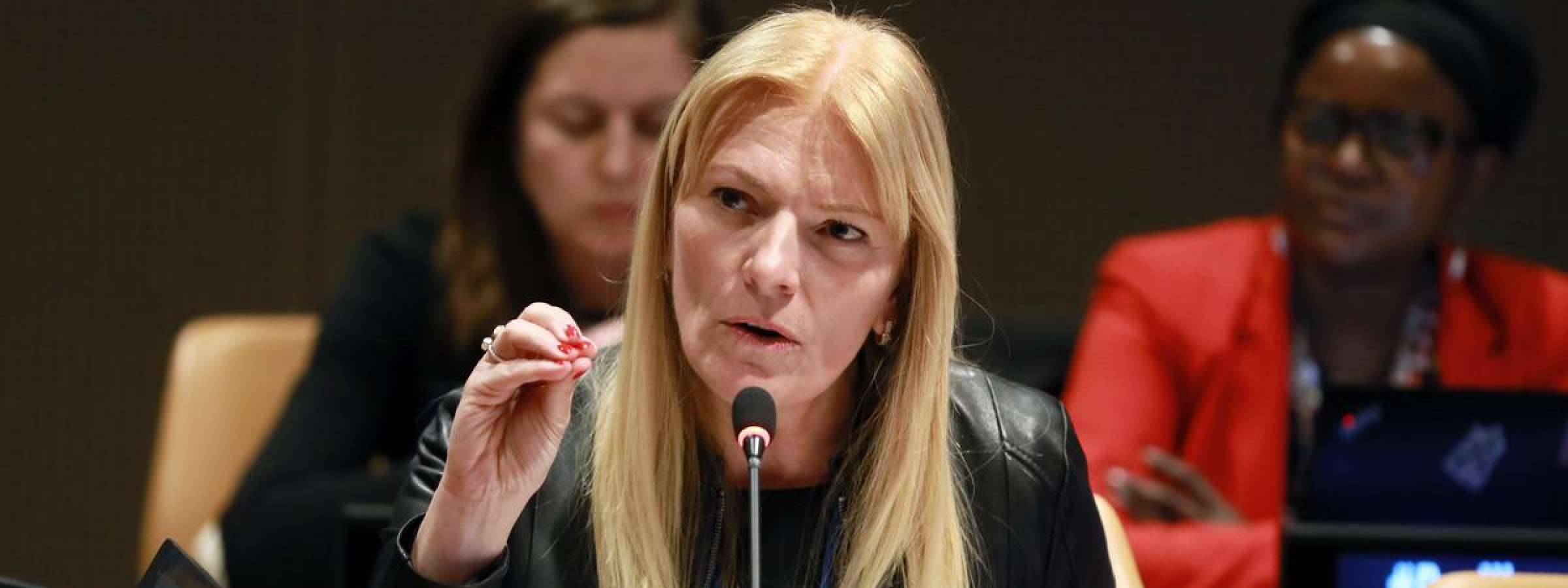
A plan for empowerment
Ms Hendricks encouraged all stakeholders to unite to advance gender equality as “one of the vital solutions for strengthening our resilience to disasters and climate change.”
“The establishment of a Gender Action Plan for the Sendai Framework we believe would be a very powerful step for elevating and strengthening the voices of women leaders,” Ms Hendricks said.
Paola Albrito said that the Gender Action Plan, coming to fruition in late 2023, will allow countries to develop gender-specific indicators to report on the implementation of the Sendai Framework.
Ms Albrito noted that UNDRR has incorporated gender empowerment and women’s leadership across its strategic framework, with an aim of dedicating 8% of its budget to gender empowerment.
She cited the Women’s International Network for Disaster Risk Reduction (WIN DRR) as an example of a UNDRR success in building women’s capacity and supporting women’s leadership in disaster risk reduction, which started in the Asia Pacific but has spread to have a global reach.
Furthermore, she said that disability inclusive DRR must be integrated fully into programmes and practices, moving away from isolated and stand-alone initiatives, and that all programmes should “actively and meaningfully involve persons with disabilities in DRR decision-making – to avoid tokenism and to ensure meaningful participation.”